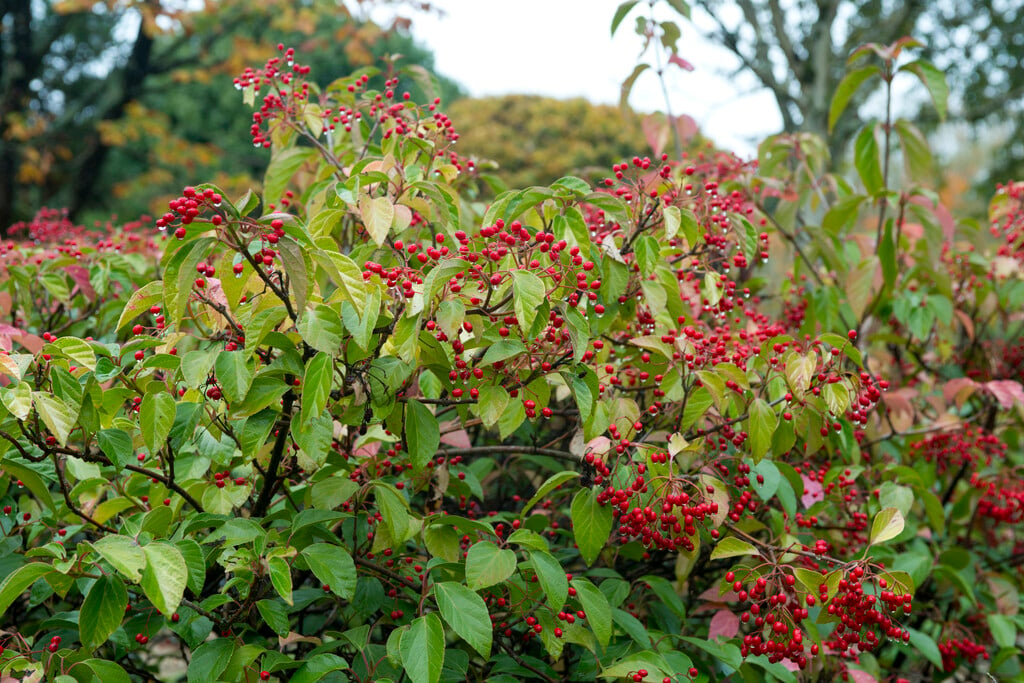Viburnum japonicum
Japanese viburnum
A slow-growing evergreen shrub, to around 2m high in cultivation, with oval, glossy dark green leaves, sometimes with shallowly toothed or wavy edges, and with numerous tiny dark dots on the undersides. Produces dense, rounded clusters of very fragrant white flowers in early summer, though young plants are not as free-flowering. These are followed by persistent red berries in autumn

Buy this plant
Size
Ultimate height
1.5–2.5 metresTime to ultimate height
5–10 yearsUltimate spread
1.5–2.5 metresGrowing conditions
Moisture
Moist but well–drainedpH
Acid, Alkaline, NeutralColour & scent
| Stem | Flower | Foliage | Fruit | |
| Spring | Green | |||
|---|---|---|---|---|
| Summer | White | Green | ||
| Autumn | Green | Red | ||
| Winter | Green |
Position
- Full sun
- Partial shade
Aspect
East–facing or South–facing or West–facing
Exposure
Sheltered Hardiness
H4Botanical details
- Family
- Viburnaceae
- Native to GB / Ireland
- No
- Foliage
- Evergreen
- Habit
- Bushy
- Potentially harmful
- Fruit are ornamental - not to be eaten. Wear gloves and other protective equipment when handling. Pets: Fruit are ornamental, not to be eaten - see the HTA guide to potentially harmful plants for further information and useful contact numbers
- Genus
Viburnum can be deciduous or evergreen shrubs with opposite, simple or palmately lobed leaves and clusters of small, often fragrant white or pink flowers, followed by red, blue or black berries
- Name status
Correct
- Plant range
- Japan
How to grow
Cultivation
Grow in any moderately fertile, moist but well-drained soil in full sun or part shade, with protection from cold, drying winds
Propagation
Propagate by seed, sown in a cold frame in autumn, by semi-ripe cuttings in summer, or by grafting in late summer or winter
Suggested planting locations and garden types
- City and courtyard gardens
- Cottage and informal garden
- Wildlife gardens
- Low Maintenance
- Flower borders and beds
Pruning
Pruning group 8 (evergreens)
Pests
May be susceptible to aphids and viburnum beetle
Diseases
May be susceptible to Phytophthora, honey fungus, grey moulds and leaf spot
Get involved
The Royal Horticultural Society is the UK’s leading gardening charity. We aim to enrich everyone’s life through plants, and make the UK a greener and more beautiful place.